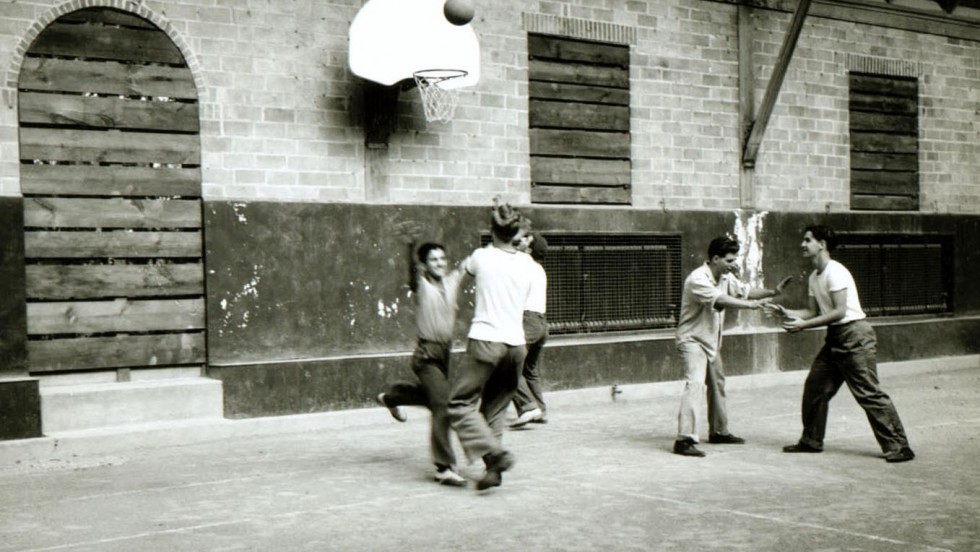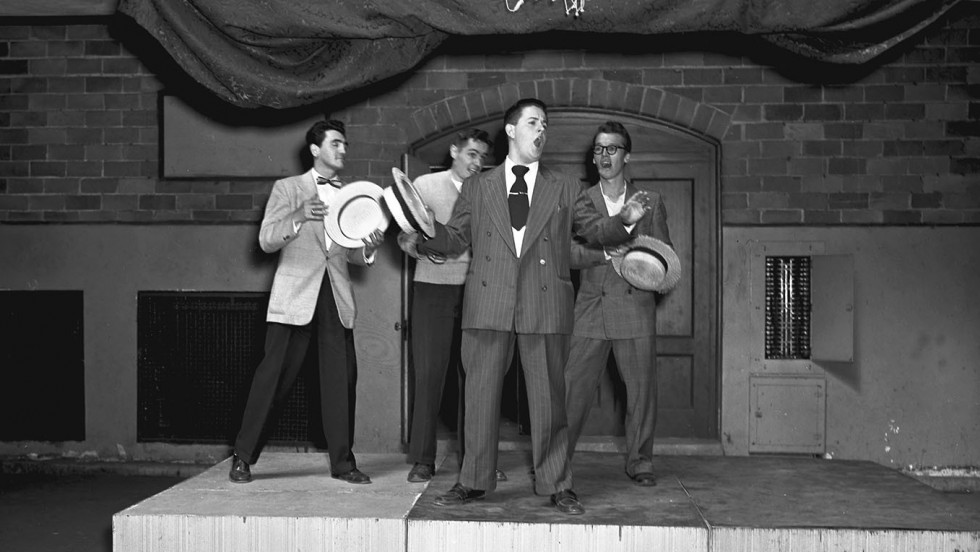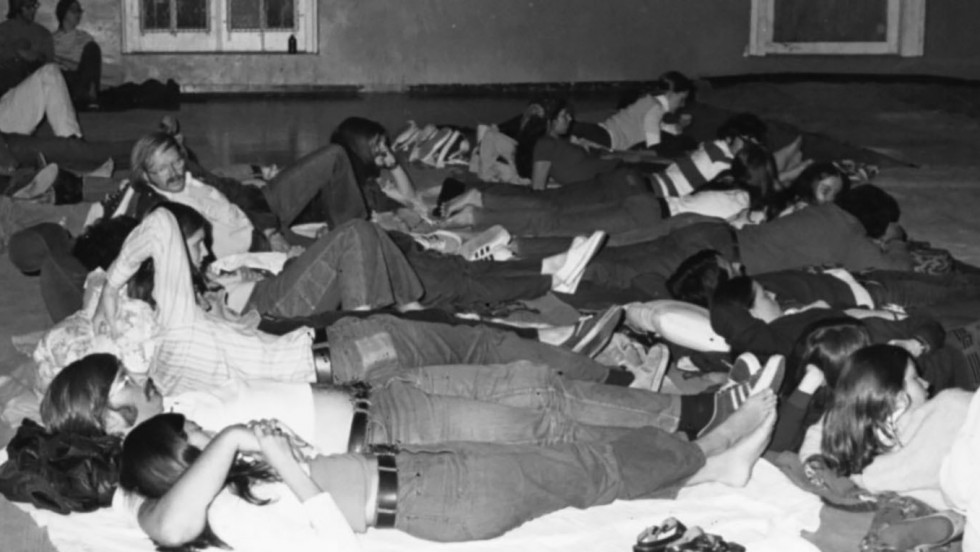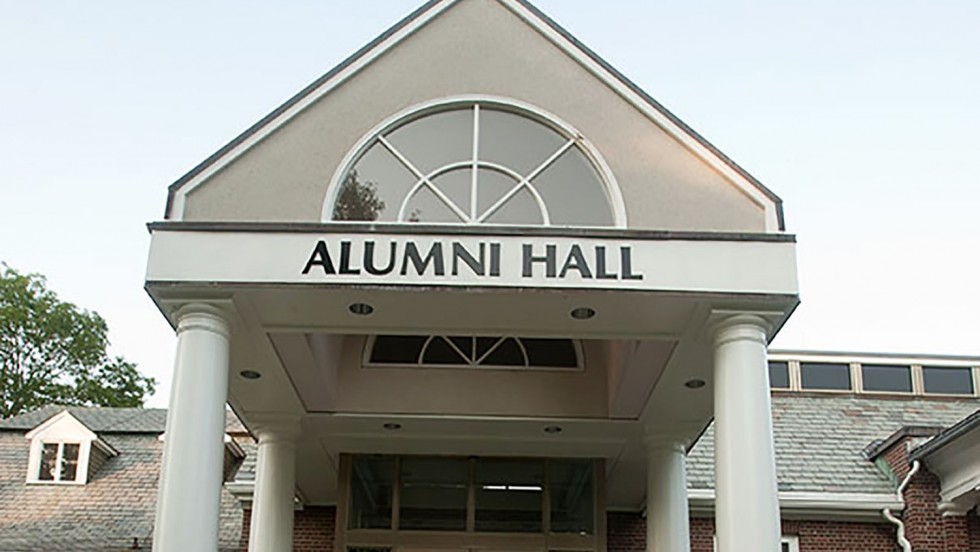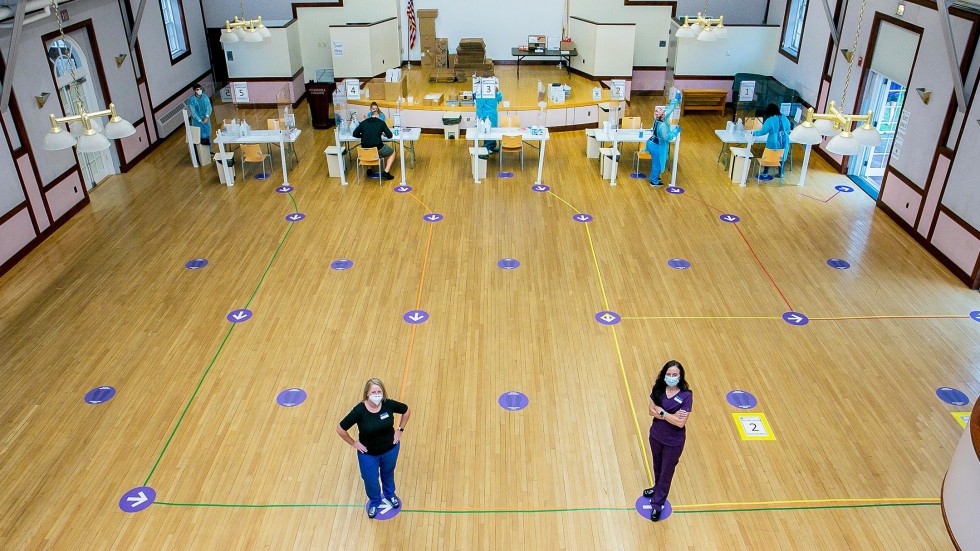
Co-directors Monique Avila and Doreen Vovcsko [l to r] helped establish the testing process.
Protecting the Nest
Stonehill Turns Alumni Hall into COVID-19 Testing Center
Silent and empty until early August, Alumni Hall became a bustling and dedicated COVID-19 testing center—one that’s integral to the prevention of outbreaks on campus this semester.
The center began conducting on-boarding, or entry, tests for students, faculty and staff in August. In partnership with the Harvard- and MIT-affiliated Broad Institute, the center’s staff paved the way for a successful opening of classes on August 24 by conducting just under 3,300 tests.
Frequent Testing
Once classes got under way, the center switched to asymptomatic surveillance testing of students, staff, faculty and affiliates throughout the semester.
Every week, around 3,000 anterior nasal swab tests are conducted and sent to the Clinical Research Sequencing Platform, a clinical laboratory at the Cambridge-based Broad Institute.
All community members who come to campus are required to test weekly. Those involved in higher engagement activities like team sports and chorus are required to test twice a week.
Community members usually receive their results within 24 hours.
Team Building
“Swift and regular testing is critical to ensuring the health and safety of our community. It also allows us to isolate promptly those who test positive,” says Monique Avila, M.S.N., FNP-C, who co-directs the testing center with Doreen Vovcsko, RN, B.S.N.
Avila and Vovcsko established a process, designed safety and hygiene protocols, obtained supplies and prepared Alumni Hall, an Ames era building, for a steady flow of daily test takers.
“Many on Monique and Doreen’s team began work on the day they were hired, but they hit the ground running. When we transitioned to weekly testing, colleagues from Athletics joined us, and together they have formed a really dedicated, effective professional team that has risen to the occasion,” says Thomas Flynn ’93, vice president and general counsel, who oversaw the creation of the testing center.
In August, Alumni Hall became the testing center.
Medical assistant Janni Encarnacion shows a testing kit.
Wealth of Experience
The task of creating a fully operational testing center on campus saw many people take on new roles for the College.
While Athletics staff continues to handle coaching, recruiting and team support duties, with the postponement of NCAA competition, they were able to answer the call to help ensure that students and staff could easily get through the testing process. The testing center adopted Ace the Skyhawk and the motto “Protect the Nest.”
In addition to Avila, Vovcsko and Athletics staff, the testing center team is also comprised of current staff members and a diverse group of nurses, EMTs, medical assistants and administrative assistants, including young alumni. Combined, they bring a wealth of experience to the College.
For more information on the College’s COVID-19 efforts, visit stonehill.edu/covid19.
Alumni Hall Through the Years
1948
1950s
1960s
1970s-80s
1990s
2000s
2020
Stonehill Alumni Magazine
Summer | Fall 2020

